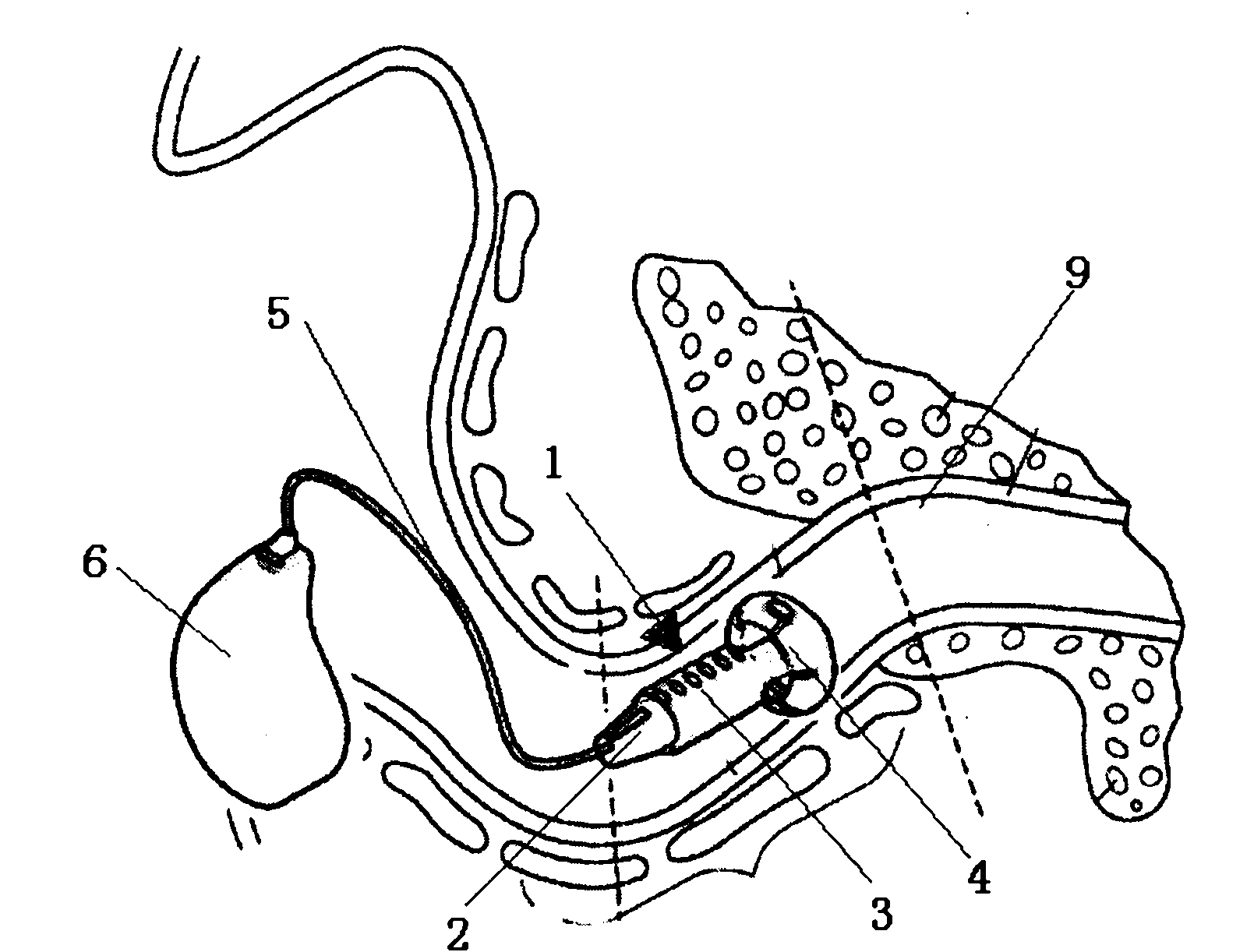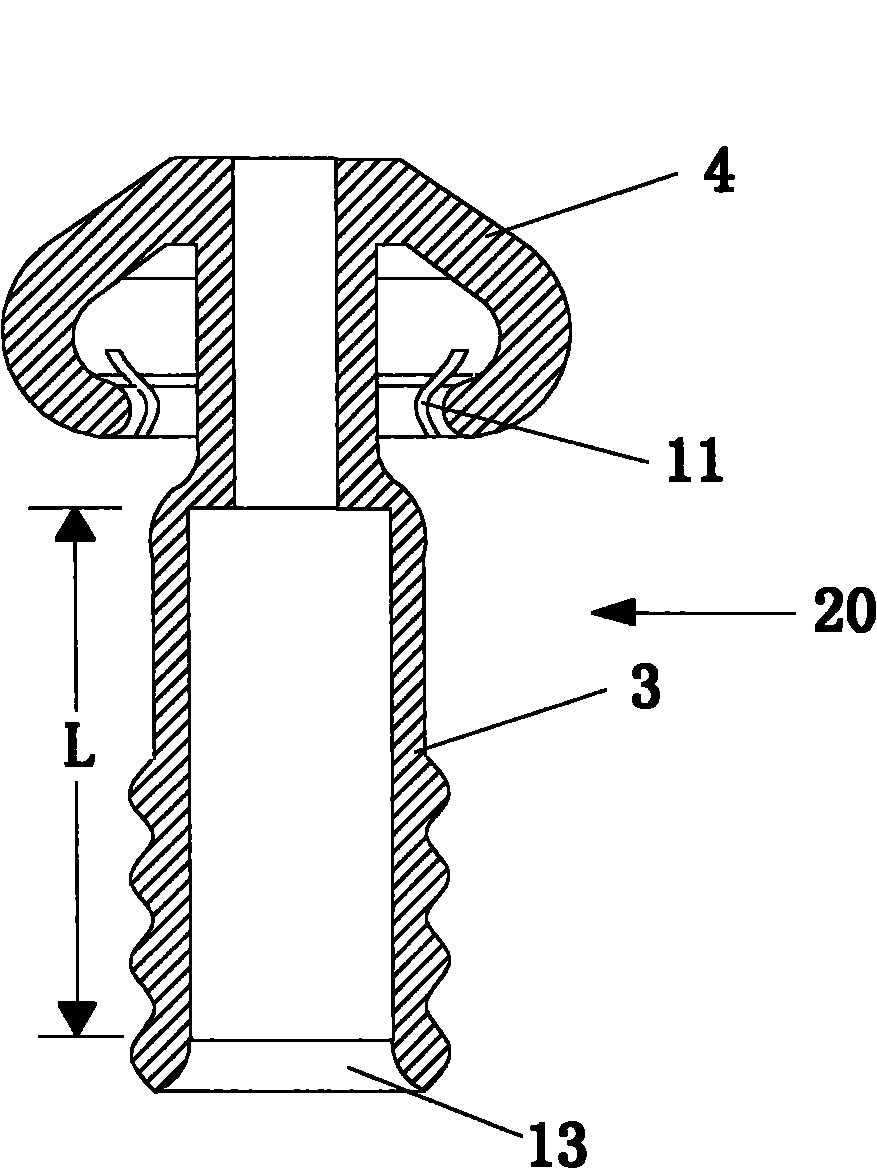Ear mold and open-type intra-aural receiving deaf-aid
A hearing aid device and open technology, applied in hearing aids, electrical components, etc., can solve the problems of gain loss, leakage of high-frequency sound pressure in the ear, etc., to reduce loss, smooth airflow, and improve use efficiency.
- Summary
- Abstract
- Description
- Claims
- Application Information
AI Technical Summary
Problems solved by technology
Method used
Image
Examples
Embodiment Construction
[0030] The preferred embodiments of the present invention will be described in detail below in conjunction with the accompanying drawings, so that the advantages and features of the present invention can be more easily understood by those skilled in the art, so as to define the protection scope of the present invention more clearly.
[0031] Such as figure 1 As shown, the hearing aid 1 includes a loudspeaker 2 (also known as a receiver), and one end of the loudspeaker 2 is placed in the sound transmission device 3 through a radial size interference fit or glue bonding, and the sound transmission device 3 cooperates with the ear mold head 4 to transmit the sound. Device 3 and ear mold head 4 are referred to here as ear mold 20 (as figure 2 , 3 Shown in and 4), the other end of the speaker 2 is connected with a speaker wire hose 5, and the speaker wire hose 5 is connected with the body 6. In the embodiment of the present invention, the sound transmission device 3 is a hearing...
PUM
 Login to View More
Login to View More Abstract
Description
Claims
Application Information
 Login to View More
Login to View More - R&D
- Intellectual Property
- Life Sciences
- Materials
- Tech Scout
- Unparalleled Data Quality
- Higher Quality Content
- 60% Fewer Hallucinations
Browse by: Latest US Patents, China's latest patents, Technical Efficacy Thesaurus, Application Domain, Technology Topic, Popular Technical Reports.
© 2025 PatSnap. All rights reserved.Legal|Privacy policy|Modern Slavery Act Transparency Statement|Sitemap|About US| Contact US: help@patsnap.com



